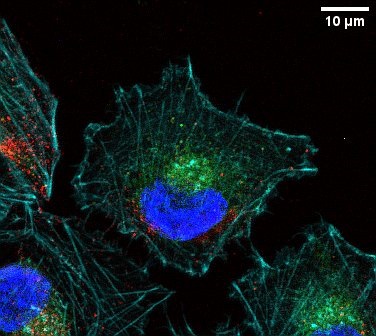Discovery of Sukunaarchaeum mirabile Challenges Definitions of Life

A groundbreaking discovery within the realm of microbial life has emerged as researchers identified a peculiar organism, Sukunaarchaeum mirabile, residing within the dinoflagellate plankton species Citharistes regius. This tiny organism exhibits characteristics that blur the lines between traditional definitions of life, acting more like a virus than a cellular entity. The findings were reported by Ryo Harada, a genomicist from Dalhousie University, and his team, who stumbled upon this unique microbe while cataloging the genetic material of its plankton host.
The research, which has been uploaded to bioRxiv as of June 25, 2025, investigates the presence of a small loop of DNA within the plankton, suggesting the existence of Sukunaarchaeum, which does not fit neatly into existing biological classifications. According to the study, "Sukunaarchaeum may represent the closest cellular entity discovered to date that approaches a viral strategy of existence," indicating a new perspective on what constitutes life.
Sukunaarchaeum possesses a mere 238,000 base pairs of DNA, significantly fewer than many viruses, which can harbor up to 2.5 million base pairs. The organism's extreme specialization allows it to delegate most biological functions, including metabolism, to its host. Unlike traditional organisms that often engage in mutualistic relationships, Sukunaarchaeum appears to provide no benefits to Citharistes regius, instead relying entirely on it for survival. Harada elaborated that the genome of Sukunaarchaeum is "profoundly stripped-down, lacking virtually all recognizable metabolic pathways, and primarily encoding the machinery for its replicative core."
The characteristics of Sukunaarchaeum challenge existing paradigms regarding life and its definitions. Viruses, traditionally considered non-living entities due to their inability to replicate independently, lack the necessary machinery for self-sustenance. While Sukunaarchaeum can replicate, it does not possess the means to sustain itself outside of its host, further complicating the distinctions between life and non-life. Notably, this organism retains genes essential for creating its own DNA replication proteins, including ribosomes and messenger RNA, distinguishing it from viruses that utilize host machinery for replication.
This discovery has significant implications for the fields of microbiology and evolutionary biology, prompting researchers to reconsider the fundamental requirements for cellular life. The study's findings resonate with ongoing debates within the scientific community about the nature of life, particularly at the microscopic level. Harada's work, while preliminary, invites further exploration into the evolutionary origins and functional capacities of such unique organisms, which may represent an evolutionary bridge between cellular life and viral entities.
As research into Sukunaarchaeum progresses, it may reshape our understanding of life itself, urging scientists to refine existing definitions and consider the complexities inherent in microbial existence. This inquiry not only reflects the intricate relationships between organisms and their environments but also highlights the ever-evolving nature of biological classification in light of new discoveries.
The implications of these findings extend beyond academic curiosity; they may influence how scientists approach studies on cellular life, ecological interactions, and the evolutionary history of organisms. Researchers are urged to conduct further peer-reviewed studies to validate these findings and explore the broader ramifications of this discovery within the scientific community and society at large.
Advertisement
Tags
Advertisement





